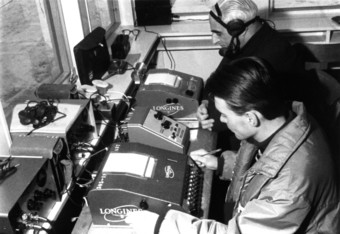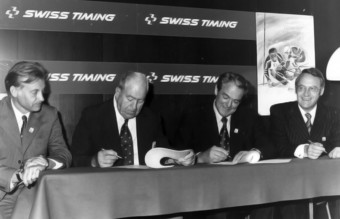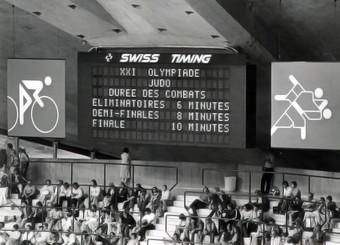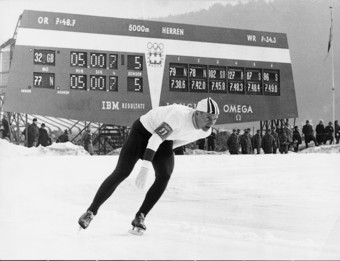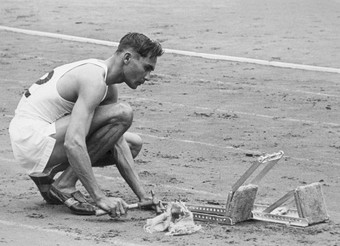History Milestones
History Milestones
2018: Swiss Timing continues to drive the evolution of world-class sports timekeeping.
2017: Swiss Timing’s contract with the IOC was extended to include each edition of the Olympic Games through 2032.
2016: The evolution of timekeeping technology and services since OMEGA first assumed timekeeping responsibilities in 1932 has been remarkable. The 30 split-second chronographs used in Los Angeles have been replaced by 450 tons of state-of-the-art equipment, 180 kilometres of cable and optical fibre, and over 1’000’000 data measured and distributed at the Rio 2016 Olympic Games. No fewer than 480 timekeepers, supported by some 800 trained volunteers, were spread among the 32 Olympic venues in Rio and its surroundings.
2012: The evolution of timekeeping technology and services since Omega first assumed timekeeping responsibilities in 1932 has been remarkable. The 30 split-second chronographs used in Los Angeles have been replaced by 450 tons of state-of-the-art equipment, 175 kilometres of cable and optical fibre, and 70 display boards at the London 2012 Olympic Games. No fewer than 450 technicians, supported by some 800 trained volunteers, were spread among the 31 Olympic venues in the British capital and its surroundings.
2009: Swiss Timing’s contract with the IOC was extended to include each edition of the Olympic Games through Tokyo 2020.
2006: Swiss Timing relocated to its current location in Corgémont, Switzerland.
2005-2006: Swatch Group took the decision in 2005 to integrate the sport department at Omega Electronics into the Swiss Timing Structure, and the following year, during the Olympic Winter Games in Turin, Swiss Timing acquired Wige Data and Wige Innovation in Germany and Wige MIC in the Czech Republic. The acquisitions gave the company the profile it enjoys today.
2001: In 2001, an agreement with the International Olympic Committee was signed extending OMEGA’s and Swiss Timing’s role as Official Timekeeper of the Olympic Games through the Vancouver 2010 Olympic Games.
1990: Swiss Timing, partnered with Breitling, timed the First World Equestrian Games in Stockholm.
1989: Swiss Timing entered into a partnership with the Tour de France and World Cycling Championships in France (Lyon and Chambéry, respectively) on behalf of Tissot.
1988: OMEGA Sports Timing workshops relocated to St. Imier, joining the timekeeping teams under the same roof for the first time ever.
The Longines R&D, industrial, and marketing departments were integrated into OMEGA Electronics.
1983: Nicolas G. Hayek masterminded the merger of ASUAG and SSIH that resulted in the Société de Microélectronique et d’Horlogerie SA (SMH), the holding company that would later be renamed Swatch Group. Mr. Hayek affirmed his commitment to Swiss Timing, ensuring that it would not be dissolved.
1980: In 1980, Longines became the Official Timekeeper of the Formula One Grand Prix.
1976: Swiss Timing was responsible for the timekeeping of both the summer and winter editions of the Olympic Games in Montreal and Innsbruck respectively. The partner brands were OMEGA, Longines, and Heuer.
1973: The World Canoeing/Kayaking Championships took place in Muotathal, Switzerland. It was the first time the results were measured under the Swiss Timing name. In the same year, OMEGA Electronics was created.
1972: Swiss Timing (Société Suisse de Chronométrage SA) was founded in Biel on July 3. The signatories to the foundation act were FH, OMEGA, and Longines.
1950: Longines was involved in the timekeeping of the first Alpine Skiing World Championships in Aspen.
1932: OMEGA sent a lone watchmaker to the Los Angeles 1932 Olympic Games. He was armed with 30 precision split-second chronographs, accurate to a tenth of a second. It was the first time a single company had provided all of the timekeeping services to an entire Olympic Games.


